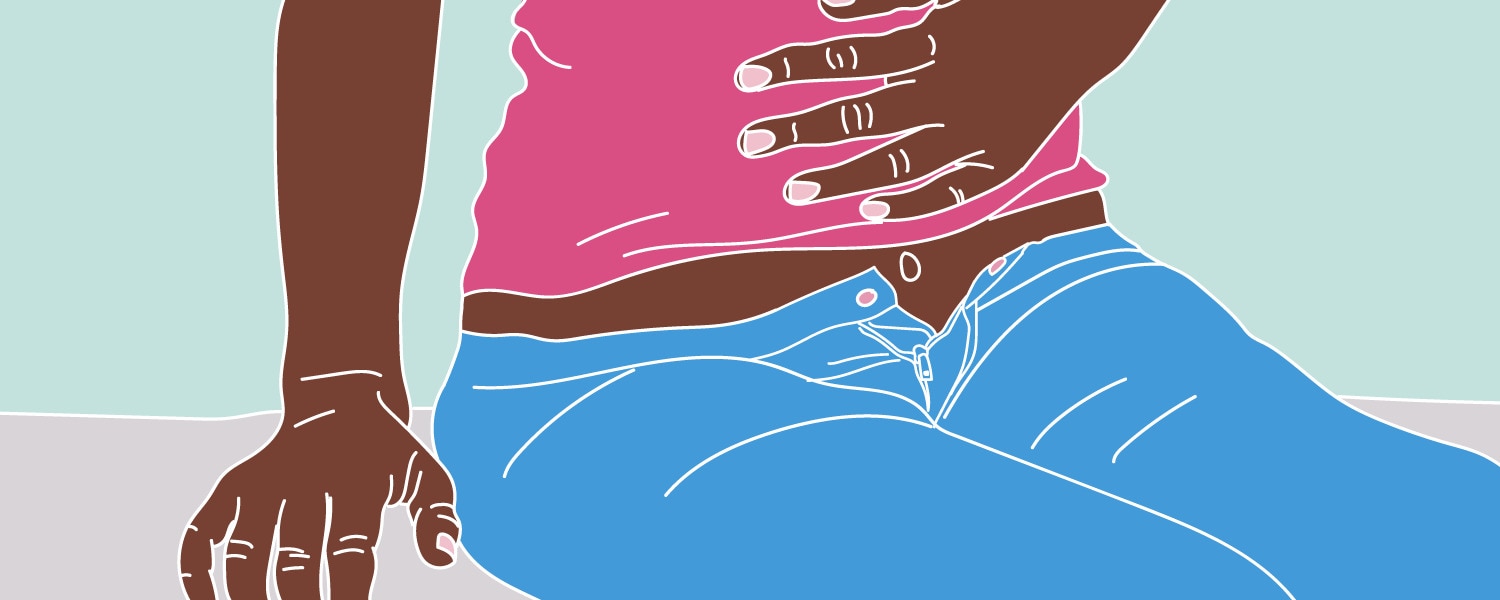What is endometriosis?

You’ve probably heard it mentioned, but what exactly is endometriosis?
The endometrium is another word for the lining of the womb that gets shed every month as part of the menstrual flow. Endometriosis is a condition where tissue similar to the type that grows inside the womb starts growing elsewhere in the body. The body will try to get rid of the tissue but because it has nowhere to go, it can cause a lot of serious pain.
Women have described it like “a demon tearing its way out of my pelvis” and “an elephant wearing stilettos, stomping on my womb”.
The misplaced tissue is often found growing in the ovaries, fallopian tubes, inside the lining of the abdomen and even in the bowel or bladder [1].
However the effects that it can have aren’t just physical. “For me, endometriosis has taken its toll both mentally and emotionally”, one woman told us. This is especially difficult given the current world situation, which has made getting access to treatments more challenging than usual.
What causes endometriosis?
Genetics and certain toxins in the environment [2] are possible causes of endometriosis. There are also issues that put you at a greater risk, like a history of pelvic infection or something known as retrograde menstruation. That’s a condition where your period blood starts going ‘backwards’ – rather than out of the vagina, it flows back through the fallopian tubes and into the pelvic cavity. This blood contains endometrial cells, which then stick to the pelvic walls and to other organs, where they continue to thicken and bleed during each menstrual cycle.
The signs and symptoms of endometriosis
The signs and symptoms of endometriosis are varied – some women might be badly affected, while others might have very few noticeable symptoms, or none at all! [3] The symptoms range from extreme tiredness and frequent thrush infections to infertility. You can learn more with our article about how fertility can be affected by endometriosis.
Your period and endometriosis
When you’re on your period, the body instructs all endometrium tissue to start shedding. If you’ve got endometriosis, the tissue outside of the uterus doesn’t have anywhere to go (unlike period tissue, which comes out through the vagina with your flow). This leads to irregular and super heavy periods as well as inflammation and extreme pain in the tummy and pelvis. In some cases, it leads to scars or cysts.
Endometriosis pain
Another symptom of endometriosis is pain. It might be pain in your lower tummy or back that gets worse during your period, during or after having sex, intense period pain that stops you from doing your normal daily activities, when peeing or pooping during your period. You may even feel sick, or experience constipation, diarrhoea or blood in your pee during your period. These can all be scary things to notice, but it’s just your body letting you know that something is going on that needs your attention.
It drove me crazy. I wondered how it was possible to be so sick all the time, all these symptoms happening at once.
How is endometriosis treated?
Although endometriosis is a chronic condition (which means it persists for a long time) there are ways to manage it. Over-the-counter anti-inflammatories, like ibuprofen, are often used to manage pain. The combined contraceptive pill can help too, by stopping eggs from being released, making periods lighter and less painful [1].
In terms of surgical treatments, key-hole surgery may improve symptoms and fertility [1], while some women may eventually decide to have a hysterectomy, which means removing the womb [1].
Getting an endometriosis diagnosis
Endometriosis can come with many different symptoms and take years to diagnose – the average is 7.5(!) [4] Some women with endometriosis suffer with a variety of symptoms that can be difficult to manage, and get in the way of living their lives to the fullest. That’s why for some, a diagnosis can actually be a source of relief. As one woman put it, “I finally had a name for my pain. A name for the debilitating cramps that came every single month.”
The only way to fully diagnose endometriosis is through a key-hole camera investigation of your pelvic area. But before this point, you may have external examinations, internal examinations, scans and blood tests – or a combination.
Reaching out and getting support
Although women everywhere are affected by endometriosis, many aren’t getting the support they need. This is because the condition often goes undiagnosed or, when it is diagnosed, it’s misperceived as ‘really bad period pain’. As a result, women often feel like they’re being ignored and their pain isn’t being taken seriously. This can lead to feeling isolated and like you’re the only one.
But with 176 million women (one in 10) affected worldwide, you’re not alone [4].
Reach out to friends and family, even if it feels like an awkward subject. Talking about it will help, and you might even have people close to you with first-hand experience of endometriosis. Not only will they know what you’re going through, but they can help you to get the support you need from your doctor.
If you recognise the symptoms and suspect that you have it, book an appointment with your doctor or gynaecologist to find out more. They’ll explore ways to ease your pain and help you cope with the symptoms.
Understandably, current government guidelines mean waiting times for appointments and surgeries may be longer than usual. If it's difficult for you to visit your doctor at the moment, consider asking for a phone or video consultation instead.
You can also read more about endometriosis on the NHS website, or find support services and a community of those affected on Endometriosis UK.